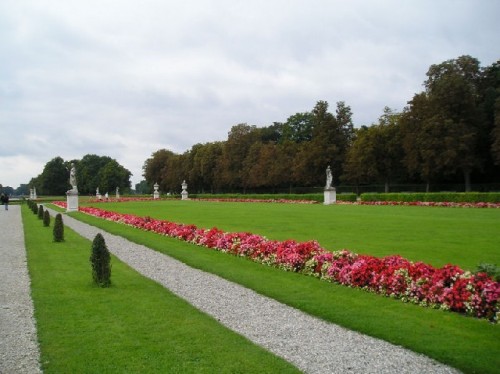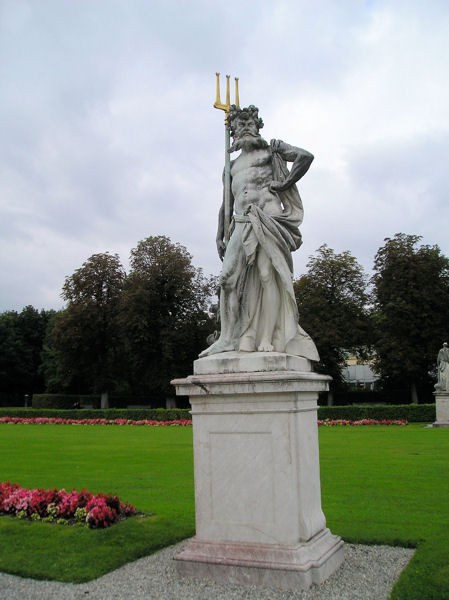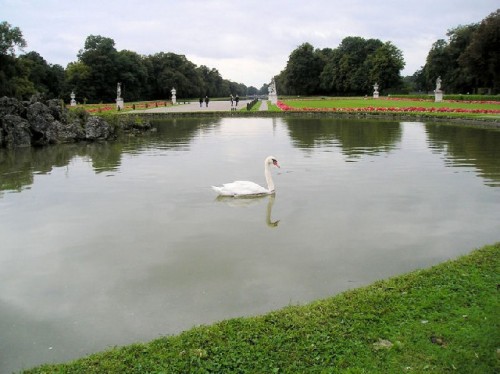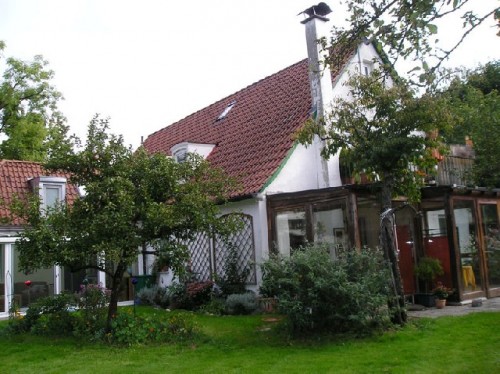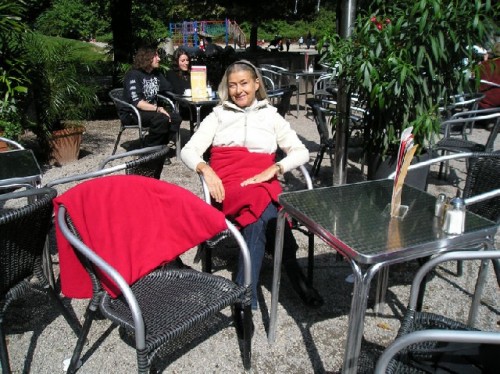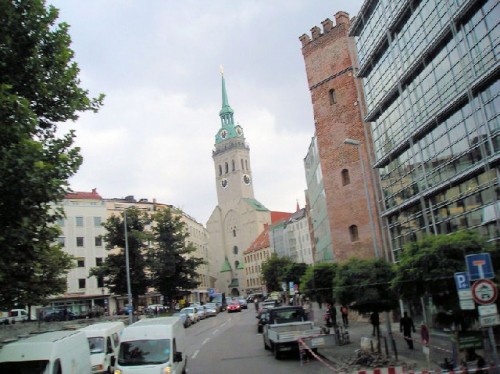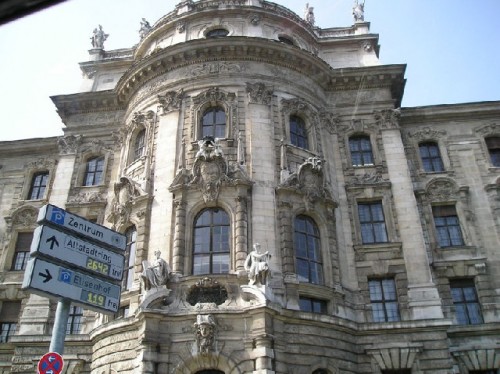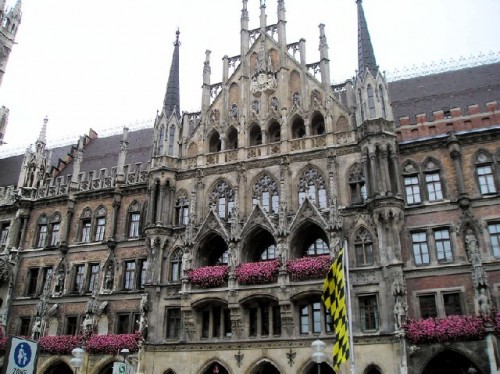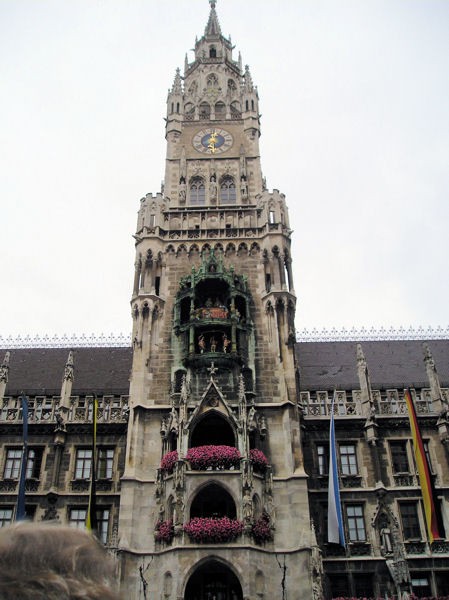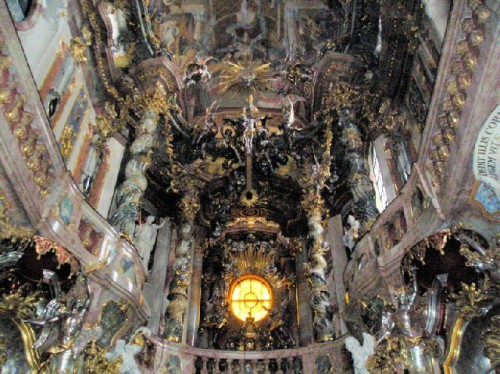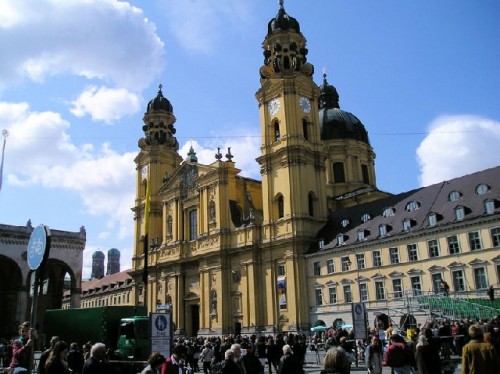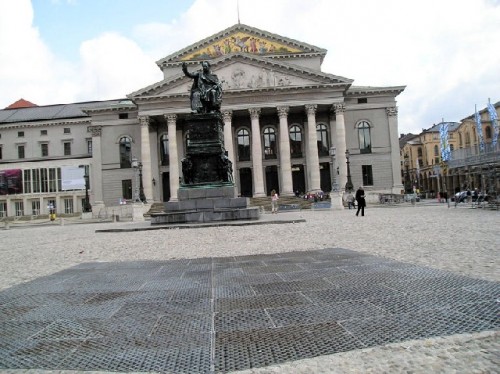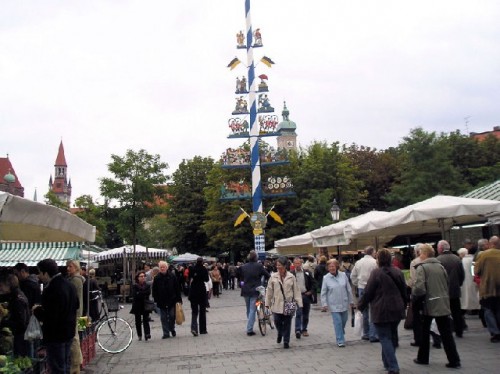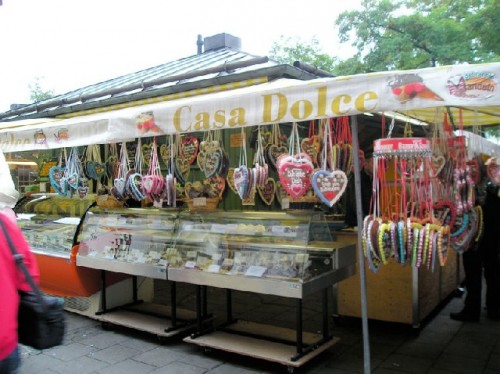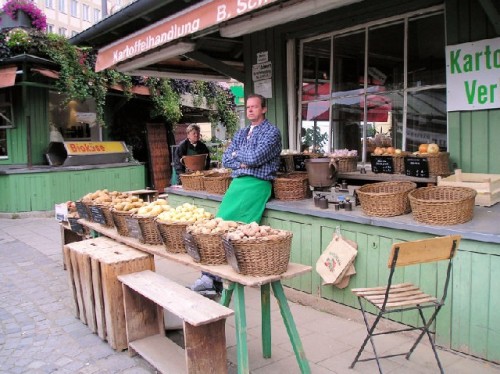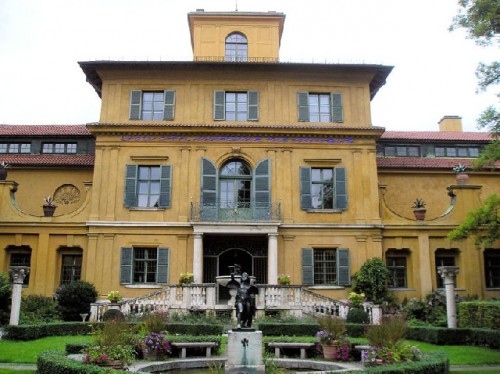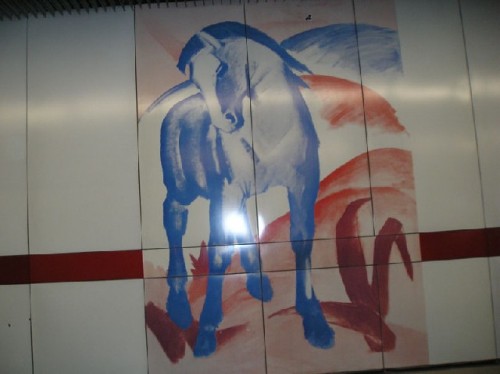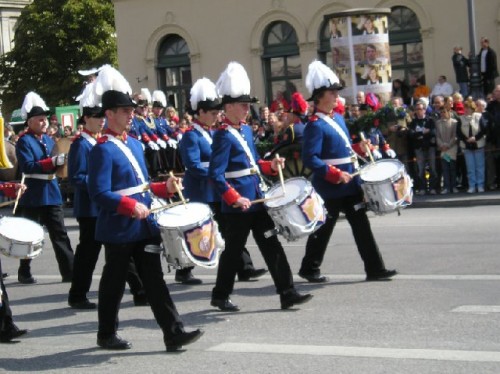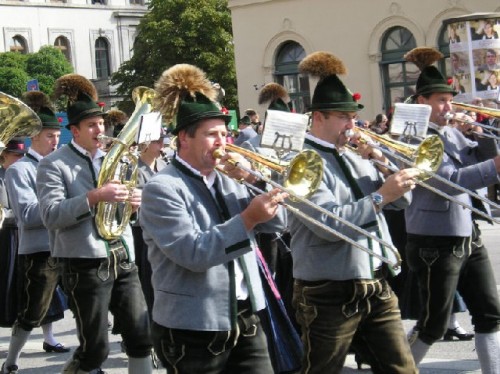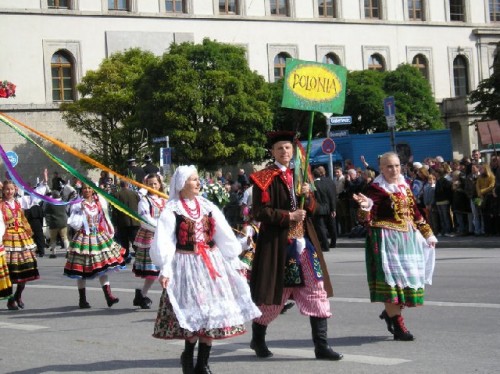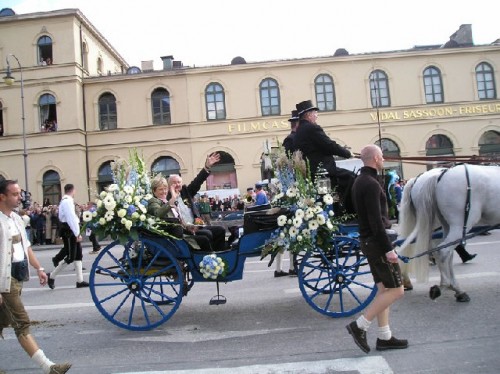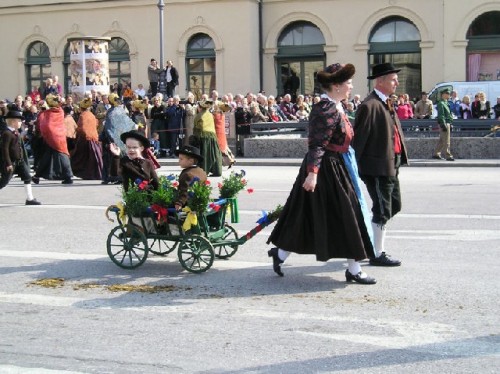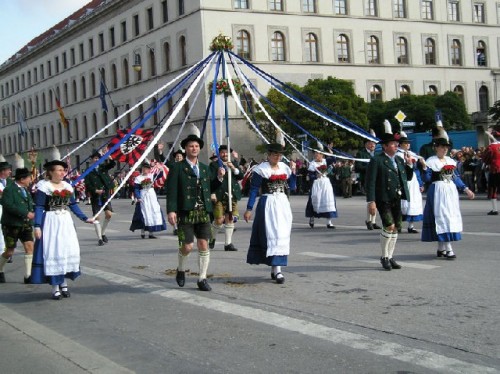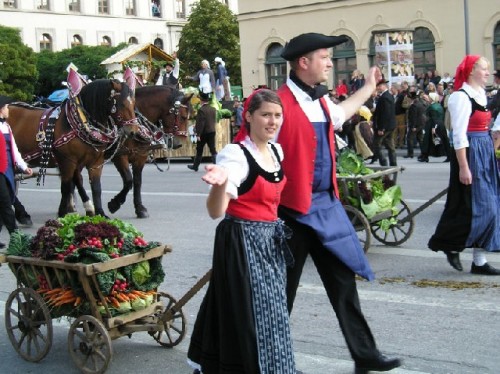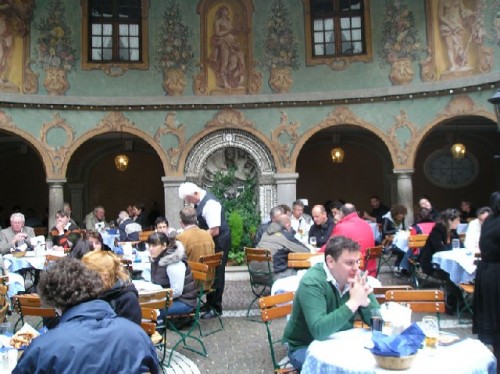Bavaria: Part One
Munich
By: Zeren Earls - Nov 15, 2008
On unusually warm 80-degree weather in mid-September, in sandals and short sleeves, I flew from Boston to Munich to visit my cousin Turan and his wife, Hanna. The next morning the greenery of the vast Bavarian Plains welcomed us as we descended to Munich airport. The outskirts of the city, lying among thick forests, emerged in the early morning light, albeit in unusually chilly 40-degree weather. My body struggled to adjust to the drastic weather change while I put on many layers of clothing. The heat felt good as I entered my hosts' house. After napping for a couple of hours to make up for the six-hour time change, I was ready to explore.
Our excursion started nearby, since my hosts live in the Nymphenburg region, home to the summer palace of the Bavarian Electorate from 1675 to 1806, and of Bavarian kings, who ruled until 1918. The Nymphenburg Palace and the adjoining park, which has an attractive canal with swans and ducks, transported me into an era far removed from the modern-day hustle and bustle. The royal buildings, surrounding a formal garden, were landscaped with flowers and ornate statues of mythic figures on pedestals. Silk wall coverings inspired by Chinese paintings enhanced the luxurious interiors of the complex, which included a Turkish bath. The porcelain shop featured exquisite objects.
The following morning I took one of the two Hop-On Hop-Off tours to discover Munich from a double-decker bus. My hour-long tour, the Express Circle, showed the highlights of the city, starting off at the Hauptbahnhof (Main Train Station). We passed by the Pinakotheken (Painting Galleries) and stopped at Max-Joseph-Platz to view the National Theater built by King Max Joseph. The façade of the theater is adorned with a Pegasus mosaic, which symbolizes art and literature; a statue of the King sits in front. Passing through the exclusive shopping street, Maximillian Strasse, we continued on to the Marienplatz, a cobble stoned square closed to traffic and the center of the city's social life.
To the left of the square is the 15th-century Gothic cathedral, the Frauenkirche, the trademark of Munich with its unadorned but magnificent two towers with green domes. To the right is the late-Gothic Neues Rathaus (new town hall) with its monumental Glockenspiel. Rhythmic sounds of 43 bells tolled, spreading in waves, while colorful carillon figures dressed in traditional clothes and set in the balcony of the tower danced to the style of Munich folklore. Directly opposite the Rathaus, the Alter Peter, the oldest church in Munich, and the new Jewish Synagogue and Cultural Center were the other highlights here. The final stop before returning to the train station was Stachus, the pedestrian shopping zone.
Munich is Germany's third largest city after Berlin and Hamburg, with a population of 1.4 million. Since its beginnings as a market and trading village in 1158, it has gone through destruction and expansive change, with each succeeding era leaving an imprint on the city's skyline. It is a city of fanciful baroque and playful rococo architecture, mingled with Gothic towers and buildings modeled on classical Greek temples, built during the time of King Ludwig I, in the 1830s and 40s. The neoclassical buildings on the Konigsplatz reflect the King's enthusiasm for classical antiquity; his passion for art turned Munich into an art center of European renown, a status which it retains to this day. The Pinakothek galleries house paintings by many of the Old Masters, while the Glypthothek has the collection of classical sculpture. The Residence Museum contains the art collections and treasures of the city's rulers.
The Olympic Games in 1972 contributed modern forms to the city's skyline. The Olympic Stadium with its roof network aesthetics and the Olympic television tower are monuments to the 20th century. So are the "four-cylinder" Bavarian Motor Works' (BMW) headquarters in the vicinity of the Olympic Stadium. The cylinders were mounted on the core of the building and then lifted into position. Currently Mercedes is building its monument to the 21st century.
The Lenbachhaus and the Pinakothek der Moderne are two institutions that attract artists and scholars to Munich as a fine arts center. The latter houses four museums under one roof: art, works on paper, architecture and design. The museum is one of the world's largest buildings housing art of the 20th and 21st centuries. In addition to permanent collections, the museum features temporary exhibitions in all four areas.
The international reputation of the Lenbachhaus, the villa that was formerly the residence of painter Franz von Lenbach, is based on its unique collection of works by the "Blue Rider" (Blauer Reiter) group, who split up from traditionalists to promote a multiplicity of expressions as opposed to a particular form of objective art at the turn of the twentieth century. The city owns the Tuscan-inspired villa and its major collections, donated by the artist's widow, as well as painter Gabriele Munter's collection of ninety oil paintings, many watercolors, drawings and sketchbooks by her longtime companion, Vassily Kandinsky. In addition, the galleries feature works by 19th -and 20th -century artists due to the city's substantial acquisition budget, which extends to contemporary art. A replica of Franz Marc's "Blue Horse" graces the underground metro station near the museum.
Munich's charm goes beyond its art and architecture. The Bavarian way of life, eating and drinking well, means that the city is permeated with beer gardens, cafes and restaurants. Schwabing is an attractive district of boutiques and galleries. We had a refreshment break in an outdoor café, which offered red blankets to keep the autumn chill away. Our gastronomic highlights included a walk through the Dallmayr, an old coffee processing factory turned into a multi-story luxury delicatessen, the Viktualianmarkt or outdoor produce market, and the city's famed beer hall, the Augustiner Brau. The variety of pastries at Café Sienna on the top floor of Kustermann department store was a treat for both eyes and mouth. The apple cake with poppy seeds served with cream was delicious.
It was a wonderful coincidence to be in Munich during Oktoberfest; the city's famed festival, which welcomes autumn. Started in 1810 in honor of the marriage between Bavarian crown prince Ludwig and Princess Therese, the festival was prolonged in following years and moved forward for better weather; now the two-week festival takes place in the latter part of September and swells the city's population to over six million. Huge tents are pitched on the Theresienwiese (Therese's Meadow); the mayor of Munich taps the first keg of beer to open the festival.
On opening day Bavarians wearing traditional costumes filled the streets; many others came from out of town to take part in the festivities. The inner city was cordoned off and devoted entirely to the festival parade. I was able to squeeze my way through dense rows of spectators to take photos of some of the multi-ethnic groups and bands as they went by. Afterwards we enjoyed beer, served in one-liter steins, along with sausage and potatoes in a downtown restaurant. Unfortunately, due to heavy demand, they had run out of Weisswurst (white sausage), a local favorite served with a special sweet mustard.
Beyond Munich, mountains and lakes add to Bavaria's international popularity. Its picturesque towns amidst woods and lakes contribute to the unique local color of its countryside. (To be continued)


